5 Types of Luxury Home Extensions for 2025: Spotlight on uPVC Conservatories
At Reddish Joinery, we’ve been at the forefront of home improvement trends for over 50 years, and we’re excited to...
Read MoreLast Updated: 5 September 2022
Have you been considering a new conservatory for your home but are unsure which is right for you? Well, you’re not alone. Deciding on your ideal conservatory is not an easy choice to make. However, as conservatory installation experts, we thought we’d try and make it a bit easier for you. So, we created this informative buyer’s guide.
If you’re opting for a uPVC or wooden conservatory, there are a number of distinctive conservatory styles that you can choose from.
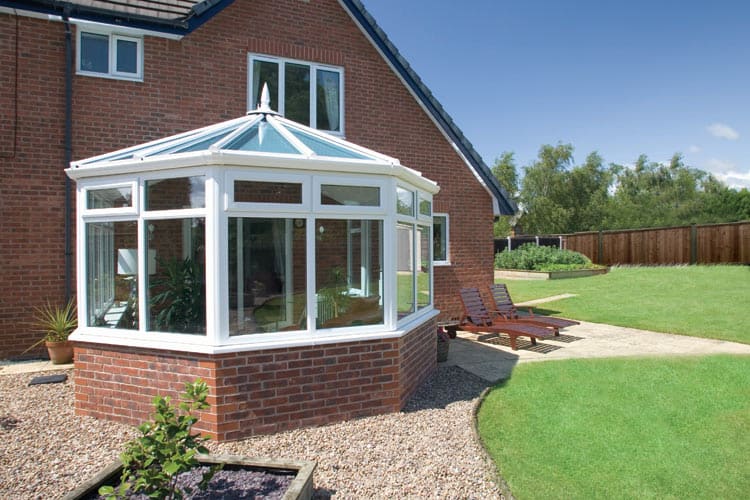
A classic design that is incredibly popular, Victorian conservatories feature an ornate ridged roof and a bay-curved front. This creates a stylish appearance whilst allowing for panoramic garden views.

Notable for their bold rectangular shape which maximises the amount of available floor space, Edwardian conservatories also feature a four-sided pitch roof.
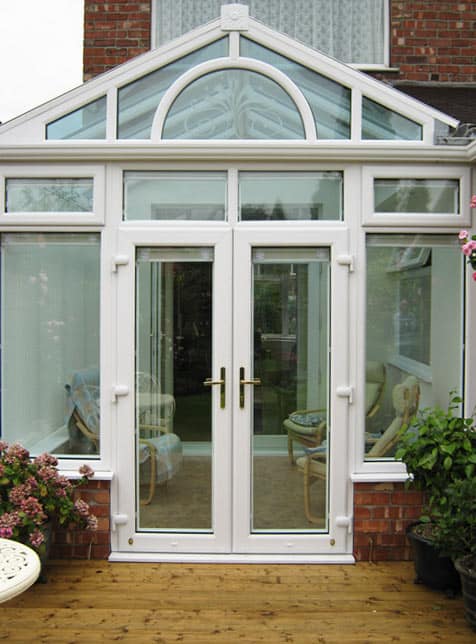
This type of conservatory has a ridged roof that meets a gable end. This creates a very clean aesthetic which fits beautifully upon contemporary style homes.
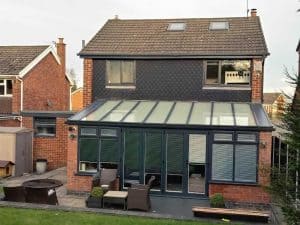 If you’re looking to fill a corner area, lean-to conservatories are ideal. A simple yet practical design, they feature a single-pitch sloped roof and their longer wall is adjoined to the property.
If you’re looking to fill a corner area, lean-to conservatories are ideal. A simple yet practical design, they feature a single-pitch sloped roof and their longer wall is adjoined to the property.
 A P-shaped conservatory is the combination of a lean-to conservatory and a Victorian conservatory. These conservatories are usually quite large in size so are great for anyone who has a lot of space at their disposal. However, other shaped conservatories are also available, such as L-shaped and T-shaped. Like P-shaped conservatories, these are the combination of various conservatory styles.
A P-shaped conservatory is the combination of a lean-to conservatory and a Victorian conservatory. These conservatories are usually quite large in size so are great for anyone who has a lot of space at their disposal. However, other shaped conservatories are also available, such as L-shaped and T-shaped. Like P-shaped conservatories, these are the combination of various conservatory styles.
Many companies often advertise uPVC as a low maintenance alternative to timber. However, in reality, the difference in maintenance between the two is actually fairly minimal. This is especially true if opting to use Accoya wood®. Accoya has been specially engineered to retain dimensional stability and will only require the odd retreatment to last up to 80-years. Like uPVC, any dirt can be wiped away easily with a soft cloth and soapy water.
A well-insulated conservatory is essential for getting the most out of it. Conservatories that are insulated properly enable you to spend less heating them but also allow them to keep cool when the temperature is high and stay warm when it’s low. If the conservatory has been installed poorly, a negative impact on insulation is a likely consequence. Therefore, opting for a reputable installer, like us here at Reddish, is essential for maximising the quality of a conservatory’s insulation.
In terms of heat retention, there is no clear winner between timber and uPVC. Both materials are able to achieve high energy ratings. Here at Reddish, we also use high-grade Argon-filled glass units on both conservatory types. These combine with the natural insulating qualities of both materials, achieving exceptional thermal performance.
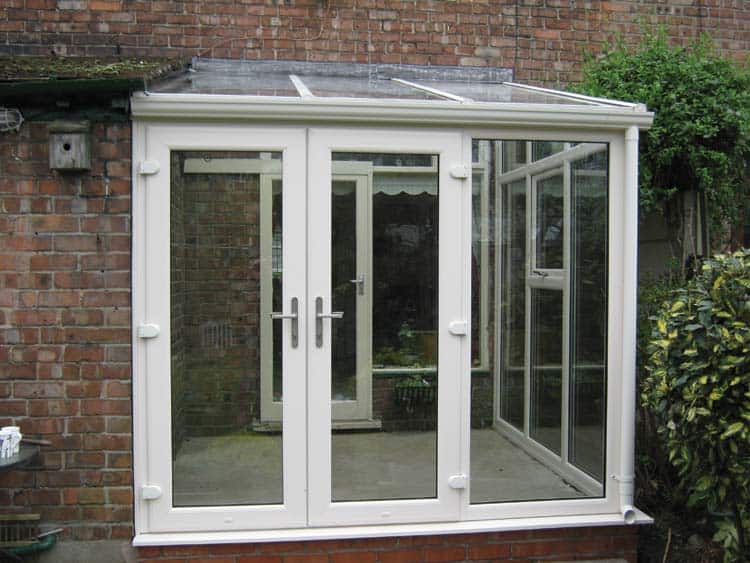
Every product we install here at Reddish is guaranteed for up to 10 years and this includes our uPVC conservatories. However, they can last twice as long as this and longer. To maximise a conservatory’s lifespan, it is essential to perform the right care regularly. This will include:
 Like uPVC conservatories, the length of time that a wooden conservatory can last will depend on how well it has been cared for. Therefore, we recommend the care tips listed above are also followed for wooden conservatories.
Like uPVC conservatories, the length of time that a wooden conservatory can last will depend on how well it has been cared for. Therefore, we recommend the care tips listed above are also followed for wooden conservatories.
If opting for a conservatory built from Accoya wood, the structure is guaranteed for 50 years but can last up to 80. However, it’s likely that you’ll need to replace other components, like a broken window lock, during this period.
As conservatories are created bespoke, it’s impossible to give an exact price. Although, the larger they are in size, the more they will cost. Plus, there are some general rules you can follow to help reduce the strain on your budget. For instance, lean-to conservatories tend to be the cheapest conservatory style.
If you’re looking to replace an existing conservatory, you could also save some money by replacing specific components instead of replacing the whole structure. A common reason for conservatory replacements is that they’re unable to maintain a comfortable temperature. This might be the result of an old, inefficient roofing system. In such cases, a replacement roof can rectify this issue and will cost considerably less than replacing the whole thing.
Timber is often considered a traditional building material because it has been used for centuries. For this reason, many feel it suits older homes better than uPVC does. However, because either material can be used to create traditional conservatory styles (Victorian and Edwardian) and those considered more contemporary (Lean-to), both materials are suitable for properties of any style, size or age. Plus, each material is available in a number of colour finishes, meaning it’s likely their colour can be matched to your existing windows and doors. For a timber-like aesthetic, woodgrain effect finishes can also be applied to uPVC. Although, if you already have timber windows and doors on your home, opting for a timber conservatory will ensure for a seamless blend. The same goes for uPVC windows and doors and a uPVC conservatory.
Conservatories are surprisingly versatile structures. They have a variety of options available for the roof and doors.
Glass roofs let in the most light but they don’t insulate as well as a tiled roof. However, low-e glass can be used to reduce the amount of heat being lost further. Tiled roofs can also be fitted with glass panels to allow more light inside the conservatory.

With their classic design, French doors provide the perfect complement to conservatories that are more traditional in style. Here at Reddish, we supply them in both uPVC and timber.
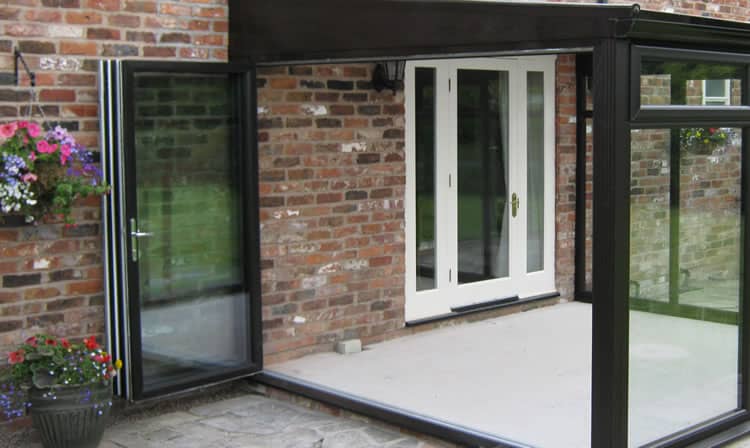
The epitome of contemporary living, bifold doors feature concertina style opening, huge areas of glazing and beautifully slender framing. They are available in uPVC, timber and aluminium.
 Because they slide to open, patio doors allow you to maximise the use of interior space. Plus, these stylish doors are mostly glazed so they flood conservatories with natural light.
Because they slide to open, patio doors allow you to maximise the use of interior space. Plus, these stylish doors are mostly glazed so they flood conservatories with natural light.
Casement windows of various sizes and styles are most commonly used on a conservatory, however it is possible for sash windows to be used in certain cases too. The expert team here at Reddish can help you decide which option best suits your needs, whether you’re looking for uPVC windows or timber windows.
Reddish Joinery has been trading since 1967, building a wealth of knowledge of the home-improvement industry during this time. For more information on our products & services, please call 0161 969 7474 or contact us online.
At Reddish Joinery, we’ve been at the forefront of home improvement trends for over 50 years, and we’re excited to...
Read MoreUnderstanding when you need planning permission for an extension in the UK can be complex. This article aims to simplify...
Read MoreConservatories are a popular addition to homes, providing a seamless connection between indoors and outdoors while offering a comfortable space...
Read MoreAbsolutely! Bifold doors are perfect additions to conservatories thanks to their slim sightlines and large panes of glass. Conservatories are...
Read More